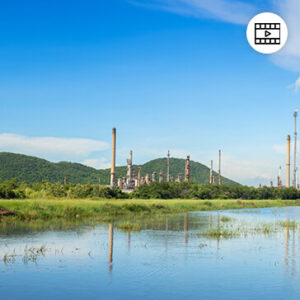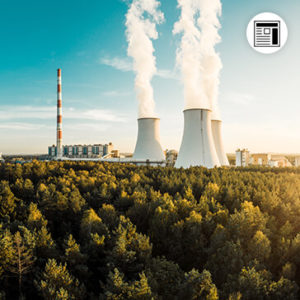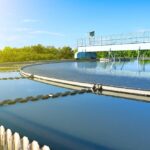The Future of Air Quality Monitoring with Montrose Mobile PTR Vans
In today’s environment, monitoring air quality presents numerous challenges for businesses across a wide variety of industries and applications. Traditional air sampling methods can be time-consuming, often providing results long after the data is collected. The complexity of tracking a wide range of Volatile Organic Compounds (VOCs) and inorganic substances requires advanced techniques that many conventional systems cannot deliver.
Montrose’s Proton Transfer Reaction Time-of-Flight Mass Spectrometer (PTR-TOF-MS) Mobile Laboratory (PTR Vans) are designed to conduct analyses of air samples in real time, bringing advanced analytical capabilities directly to the client. Enabled with ultra-low detection limits reaching Parts Per Trillion (PPT), the mobile platform can track virtually any Volatile Organic or Inorganic Compound at a rate of up to one data point per half-second.
With this advanced, on-the-go solution, combining traditional air monitoring systems with state-of-the-art real-time detection, we provide clients with insights exactly where they are needed.
Montrose has developed sampling methodologies to accommodate a wide variety of industries and applications including:
- Petrochemical Applications
- Industrial VOC Monitoring
- Emergency Response Testing
- Community Monitoring
- Fenceline Monitoring
- Source Emission Testing
- Vapor Intrusion – Indoor Air Quality
- Industrial Hygiene Analysis
- Process Optimization
- Environmental and Biological Research
- Food and Flavor Process Analysis
- Data acquisition and analysis based on the ASTM D8460
- Air Sampling: Air is drawn from outside the vehicle using the mobile lab’s collection system.
- Sample Mixing: The collected air sample is mixed with a reagent gas that reacts with the target compounds.
- Ionization: The mixed gas is introduced into an ionization chamber, where energy is applied to ionize the molecules.
- Mass Separation: The ionized molecules are separated based on their mass using advanced mass spectrometry techniques.
- Quantification: The separated ions are counted and quantified to determine the concentrations of different compounds.
- Mapping: GPS and meteorological data are integrated to map pollutant concentrations and pinpoint their sources.
- Odor Analysis (if applicable): For odor projects, a multivariate analysis (MVA) program is used to identify correlations and causations among different compounds.
Our PTR Vans provide precise, real-time detection of volatile organic compounds at ultra-low levels, ensuring compliance with regulatory standards such as the GC Interface for EPA Method 18, Other Test Methods (OTM) with the EPA for Stationary Source Work, and industrial hygiene compatibility. As a new type of detection, it is increasingly embraced by the wider regulatory community and is supported by dozens of peer-reviewed studies, validated through extensive research across emission studies, reaction kinetics, and mobile monitoring platforms.
PTR Vans are equipped with multiple technologies that provide many benefits, such as real-time on-site results, real-time triangulation, the ability to provide measurements while moving, detection of thousands of volatile compounds, and seamless integration with other equipment like FTIR and laser devices. These technologies include:
- Gas Chromatography (GC) Interface: The newest feature of the PTR van includes an integrated gas chromatograph that separates complex mixtures into individual compounds before detection. This allows for the precise identification and quantification of specific compound isomers and other detailed chemical analyses, improving data quality and accuracy.
- Weather and GPS Integration: The Columbia Weather Systems Magellan MX 500 Weather Station provides meteorological data, such as wind speed and direction, which, combined with GPS data, helps pinpoint the exact location of emissions sources.
- Fourier Transform Infrared Spectroscopy (FTIR): Equipped with the MKS Instruments Model 2030 G MultiGas™ Analyzer, the system uses FTIR technology to detect and quantify multiple gas species, enabling the monitoring of various applications such as stack emissions and ambient air quality.
- Calibration and Dilution Systems: The Environics Model 4000 Gas Mixing System and Millennium Instruments Heated Dilution Systems are used to create accurate calibration gases and perform precise dilution of samples.
- Real-Time Data Collection and Analysis: The system’s advanced data collection and analysis capabilities, including real-time triangulation and multivariate analysis (MVA), enable detailed evaluation of compound sources and odor allocations. This results in more effective and timely interventions.
- Advanced Data Visualization: Integrated software and mobile applications offer comprehensive data visualization and management. The system supports seamless integration with other monitoring tools, providing a unified view of data and simplifying the analysis and reporting processes.
- Inorganic air pollutants: Real time monitoring of air pollutants including SO2, H2S, NOx, NO2 and ammonia using light absorption gas analyzers.
Whether you need real-time data analysis, continual studies, leasing with an operator, or long-term measurements, our advanced mobile lab provides precision and insight directly at your site. We’ll work with you to develop the most cost-effective solution for your emissions tracking program.
Contact us to learn more or schedule a demo.













